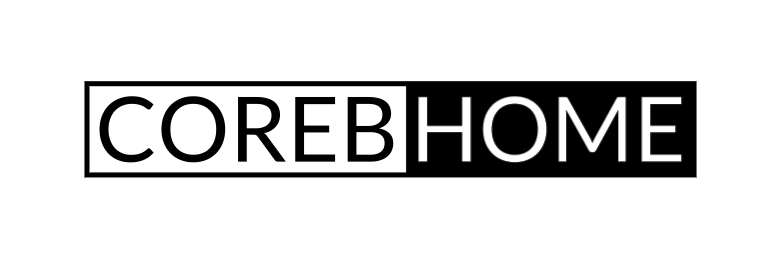In the dawn of the technological era, smart home systems have emerged as the epitome of modern living, seamlessly blending cutting-edge innovation with the comfort and convenience of home. This comprehensive exploration delves into the intricacies of smart home technology, offering a professional perspective on the advanced systems that redefine the way we interact with our living spaces. From sophisticated automation to integrated security protocols, this discourse aims to shed light on the forefront of smart home systems, where functionality meets elegance in a symphony of intelligent living.
Section 1: Precision Engineering in Smart Home Automation
At the heart of contemporary smart homes lies the precision engineering of smart home automation, orchestrating a symphony of interconnected devices to enhance the living experience to unprecedented levels.
1.1. Advanced Lighting Systems:
Smart lighting systems, embodying intelligence and adaptability, transcend traditional illumination methods. Utilizing sophisticated sensors and programmable settings, these systems dynamically adjust ambient lighting based on natural light levels, time of day, and user preferences. This not only enhances energy efficiency but also creates an atmosphere that seamlessly aligns with the rhythm of daily life.
1.2. Automated Climate Control:
Smart thermostats and climate control systems epitomize the fusion of technology and comfort. By learning user habits and preferences, these systems autonomously adjust heating and cooling to optimize energy consumption. The integration of voice commands and mobile applications empowers homeowners with effortless control, fostering an environment where personalized well-being takes center stage.
1.3. Intelligent Home Security:
The evolution of home security technology has reached unprecedented heights with intelligent surveillance systems. Equipped with high-definition cameras, facial recognition software, and motion sensors, these systems offer real-time monitoring and instant alerts. Integrated with smart locks and access control, they provide a comprehensive security solution, instilling homeowners with an enhanced sense of safety and peace of mind.
Section 2: The Nexus of Connectivity: Smart Home Hubs
At the nexus of home technology lies the concept of smart home hubs, serving as central command centers to create a cohesive ecosystem of interconnected devices.
2.1. Centralized Control Interfaces:
Smart home hubs act as the central nervous system of the interconnected ecosystem, offering centralized control interfaces through user-friendly mobile apps or voice-activated devices. These hubs enable users to effortlessly manage and monitor various smart devices, creating an environment where every element is seamlessly at their command.
2.2. Cross-Device Integration:
The essence of home technology lies in the seamless integration of diverse devices. Smart home hubs facilitate cross-device communication, allowing devices from different manufacturers to work harmoniously together. This interoperability ensures a unified user experience, where lighting, climate control, security, and entertainment systems collaborate seamlessly to enhance daily living.
Section 3: The Art of Intelligent Entertainment Systems
Home technology extends its influence to the realm of entertainment, introducing intelligent systems that redefine how we engage with media and multimedia content.
3.1. Smart Home Theaters:
Home theaters have evolved into sophisticated entertainment hubs, complete with smart TVs, immersive sound systems, and voice-activated controls. Intelligent audio-video systems adapt to user preferences, creating a personalized cinematic experience within the comforts of home. Integration with streaming services and voice-activated assistants adds an unprecedented layer of convenience to the art of home entertainment.
3.2. Intelligent Audio Systems:
Smart audio systems, infused with artificial intelligence and machine learning, adapt to user preferences over time. These systems analyze listening habits, curate playlists, and adjust audio settings to create an immersive auditory experience. Voice-activated commands further enhance user control, turning the home into a space where technology seamlessly merges with the art of audio enjoyment.
Section 4: The Future of Smart Home Systems: AI and Machine Learning
As we gaze into the future of smart home systems, the integration of artificial intelligence (AI) and machine learning emerges as a transformative force, shaping a more intuitive and responsive living environment.
4.1. AI-Powered Home Assistants:
The evolution of home assistants, driven by AI, introduces intuitive devices capable of understanding context and adapting to user behavior. These AI-powered assistants go beyond simple commands, anticipating user needs and proactively offering relevant information. Serving as the interface between users and smart home ecosystems, they become digital companions, streamlining daily tasks and enhancing overall efficiency.
4.2. Machine Learning in Energy Management:
Machine learning algorithms, seamlessly integrated into energy management systems, analyze patterns of energy consumption and optimize usage accordingly. By learning from user behavior, these systems predict energy needs, identify inefficiencies, and recommend adjustments to enhance overall energy efficiency. The result is not only reduced environmental impact but also significant cost savings for homeowners.
Section 5: Ethical Considerations: Privacy and Security
As we embrace the conveniences of smart home systems, ethical considerations regarding privacy and security become paramount. This section explores the measures essential for safeguarding personal information in the interconnected world of intelligent living.
5.1. Robust Network Infrastructure:
The foundation of a secure smart home lies in a robust network infrastructure. Homeowners should invest in secure, password-protected Wi-Fi networks and keep devices regularly updated with the latest security patches. Implementing firewalls and encryption protocols adds an additional layer of protection against potential cyber threats.
5.2. Data Encryption and Privacy Controls:
As smart devices collect and process vast amounts of data, encryption becomes imperative. Ensuring that data is encrypted during transmission and storage safeguards sensitive information. Additionally, homeowners should proactively understand and utilize privacy controls provided by smart devices, managing what data is shared and with whom.
Conclusion:
In the grand tapestry of modern living, smart home systems emerge as both an artist and an enabler, transforming living spaces into intelligent, responsive environments. From the symphony of smart home automation to the interconnected world








No Comment